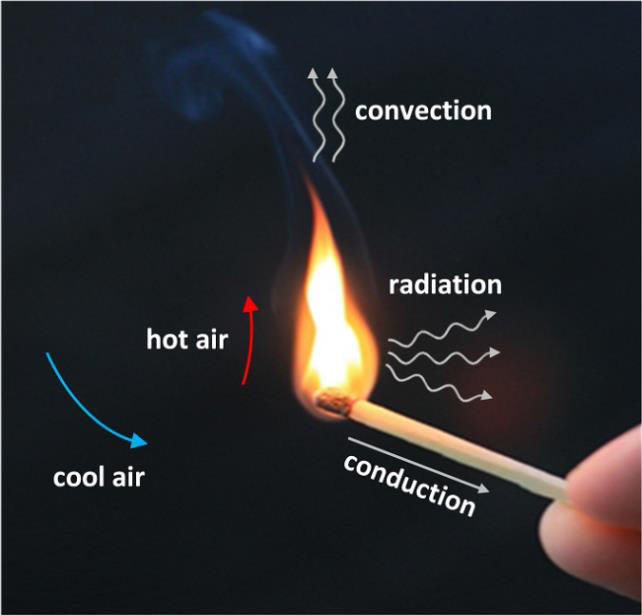ME346 - Heat Transfer

Instructor
Prof. U. N. Gaitonde
Section
S-2 (CPI List - Alternated)
Semester
Autumn
Course Difficulty
Normal (4 on a scale of 10 - with 10 being extremely tough) - The course starts from the basics, which we had covered in the senior secondary, and builds upon those ideas
Time Commitment Required
3 Hours (Class) + 3 Hours (Self Study)
Grading
Grading was lenient.
Attendance Policy
No Attendance Required, though, in the exams, questions had been asked based on discussions in the class and reading the book was not sufficient for these. Problems discussed in class included instances of engineering approximations and discussions on these.
Pre-requisites
There are no pre-requisites as such.
Evaluation Scheme and Weightages
In this offering, we had the following grading criteria -
- 7 Quizzes (60%)
- 1 Assignment (5%)
- End-semester Examination (35%) The quizzes were scheduled biweekly. There was no mid-semester examination. If the student missed one quiz, the average of the remaining 6 was taken instead of the 7 quizzes. If the student missed more than 2 quizzes, they were compensated through a viva taken by another faculty.
Topics Covered in the Course
This course covers the standard topics in a standard undergraduate heat transfer course, plus some additional topics. The main topics covered are -
- Introduction - Laws of heat transfer, Some properties/characteristics and their orders of magnitudes, Dimensionless numbers, Problem-solving techniques
- Conduction - Governing Equation, Fourier’s law, Steady State vs Transient
- Fins
- Radiation - Blackbody, Radiosity & Irradiation, Directional v/s Hemispherical & Spectral v/s Total, Lambert’s law and Diffuse surfaces, Planck’s Law, Wein’s Law, Stephan Boltzmann Law, F-Factor, Emissivity & Absorptivity, Reflectivity, Kirchoff’s law, Shape Factors, Enclosures
- Heat Exchangers - Types of Heat Exchangers, Fouling Factor, Sizing, Performance, Effectiveness, NTU
- Convection - Dimensionless Numbers, Governing Equations, Natural Convection, Boussinesq Approximation, Forced Convection, Correlations
- Condensation & Boiling - Drop Condensation, Film Condensation, Nusselt’s Analysis, Pool Boiling Curve
Quality of Lectures
The course was taught in a flipped/blended mode, which means that we were encouraged to watch the videos before the class, the topics were discussed and examples were re-worked, and the focus in class was on problem-solving. Though in actual experience, almost all content was covered in class too. Watching the content beforehand gives you an edge because then, your attention is in the minor explanations not covered in videos or textbooks.
Assignments and projects in the Course
The course had a single assignment, which was on real-life application of Heat Transfer. The assignment was very straight forward and easy. Ample amount of time was given for this. (A month to write one - page)
Exams
Easy/Moderate/Difficult (Separately for quizzes, Midsem, Endsem) Examinations were moderate, but slightly towards the easy side. The questions were based on problems already discussed in class.
Reference Material
Recommendations by Professor -
- Sukhatme, A Textbook on Heat Transfer, 4th Ed. 2005 (Not available online)
- Incropera and Dewitt, Fundamentals of Heat and Mass Transfer, 7th Ed. 2011
- Lienhard and Lienhard, A Heat Transfer Textbook, 4th Ed, 2017
Other Recommendations -
- Cengel Y.A, Heat transfer – A practical approach, 2nd edition, Tata McGraw-Hill, New Delhi
Importance of Course
This course is a fundamental course and is relevant to all sub-fields of Mechanical Engineering while being indispensable for those studying anything related to Thermal and Fluids Engineering
Conceptual clarity in this course is essential for the following applications -
-
CFD: Computational Fluid Dynamics (CFD) is a very important field in TFE and allows one to numerically solve problems of a very broad variety. This requires an in-depth understanding of the concepts and equations of heat transfer and fluid mechanics, in combination with good coding skills.
-
Design of Thermal Equipment: This has applications in the design of thermal equipment. This includes insulating screen, heat exchangers, a home cooling system, or even the Space Shuttle Thermal Protection System which protects the Space Shuttle Orbiter during re-entry.
-
Plant / Process Engineering: Any manager at a refinery or a plant would have the need to deal with equipment involving fluid and heat transfer. This means that conceptual clarity in this course would help you run the manufacturing site.
-
Safety: Heat transfer is a field that has immense applicability in fire fighting and safety systems design.
-
Most courses in TFE have this course as an official or unofficial pre-requisite:
- ME 306 - Applied Thermodynamics
- ME 350 - Refrigeration and Air Conditioning
- ME 403 - IC Engines
- ME 406 - Steam and Gas Turbines
- ME 415 - Computational Fluid Dynamics and Heat Transfer
- ME 623/683 - Cryogenic Engineering I and II
- ME 662 - Convective Heat and Mass Transfer
- ME 663 - Advanced Heat Transfer
- ME 665 - Conduction and Radiation
Review by: Neilabh Banzal